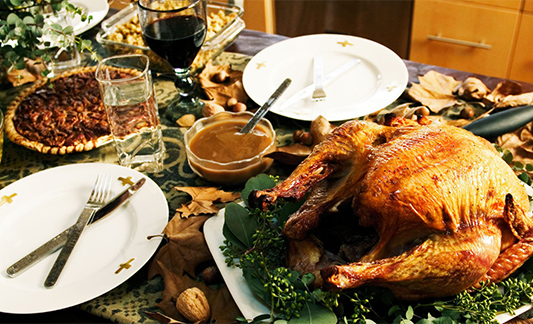Help Isom IGA recover from devasting floods

1 min read
Protecting Against Coronavirus While Shopping
Written by Shelley Maniscalco, MPH RD
Apr 16, 2020
While we may be settling in to our new stay-at-home routines, there are still some exceptions to the shelter-in-place rules most states are under. The big one: going to the grocery store.
The good news is, leaving the house to go grocery shop doesn't have to be anxiety-producing if you know and implement key steps to keep safe. It’s a cycle that starts with planning and ends with being food safe at home. This is a guide to help!
What IGA is Doing
First, know that IGA USA Corporate and your local IGA store are committed to preserving the health of all communities, shoppers, and employees. We have implemented mandatory safety standards across the board. Additionally, many IGA stores are offering an e-Commerce option to allow shoppers to get the groceries they need, while limiting time in the store. Click here to read our IGA Minimum Safety Standards for more information.
Planning
Maybe you've always been a list-maker. Maybe you prefer to wing it. Whatever the case, coming up with a game plan before you head to the grocery store has never been more important than it is right now. A little bit of planning will help ensure you have the groceries you need, especially if you're not going to return to the store for an extended period of time in order to comply with shelter-in-place orders. Having a clear plan will also help reduce the risk of depleting the store shelves, as you'll know just how much you need without going overboard. Here are some tips to help plan your next grocery run:
- Make a list. Think about what your go-to meals and snacks are. Is there a recipe you've been meaning to try but didn't have the time? What about recipes that include mainly shelf stable ingredients? Do a quick fridge/freezer/pantry inventory too. What fruits, veggies, grains, proteins, and dairy products do you need to replenish and/or have on hand?
- Keep backups in mind. It’s possible that some foods may need to be restocked during the time you are at the store. Make sure you know, for instance, which grain you’d sub out for pasta or what other cheese you’d like to try ahead of time to make the shopping trip most efficient.
- Choose a mix of perishable and non-perishable items to eat over the course of about 2 weeks. Most of us are not used to shopping so infrequently and it’s a different way of thinking. For more perishable foods, like fruits and vegetables, get a variety of fresh, frozen, and canned. Check the date on milks and yogurts—you may want to choose shelf-stable milk to last longer.
- Designate a food shopper. Even when we are not cooped up in our homes, shopping can be a fun outing to do together. But, now’s not the time to pile the family in the car. And, remember, if you have the slightest fever or cough, assign another shopper and stay away from the store.
- Be thoughtful about what time you choose to go. Check your local store for special hours (e.g., for seniors, healthcare workers, etc.).
At the Store
- Wash your cart. Most stores are already cleaning carts in between shoppers or have wipes available at the door. It's not a bad idea, however to have your own cleaning wipes on hand to run over the surfaces that you and your food will touch. Use bags provided for produce and meat products.
- Wash hands. Have sanitizer on hand to wash up before you shop.
- Only touch items you plan to buy. Use a bag to pick up produce.
- Maintain social distance at all times—whether in the aisle, in the checkout line, or paying the cashier.
- Use a credit card to pay. If paying by check, bring your own pen.
- Hand sanitize once in your car.
At Home
- Wash hands before and after you put your groceries away.
- Wipe surfaces after you put groceries away.
- Understand the core principles of food safety. Per multiple government agencies, there is no evidence that coronavirus can be transmitted through food. However, now is a great time to practice and reinforce good food safety habits! For instance, the best way to clean fresh produce is by rinsing well under running water—no need for soap or chemicals. Never clean meat—the risk of cross-contamination is too great and any pathogen present will be killed after you cook to the recommended temperature (145° for beef, pork, lamb, and fish; 165° for poultry and leftovers). For more resources and information on food safety, visit the Partnership for Food Safety Education.
Previous Story
← Making Meals with your Pantry Supplies
You May Also Like
These Stories on Shopper Solutions
Aug 2, 2023 11:23:17 AM |
2 min read



.png)
.png)
